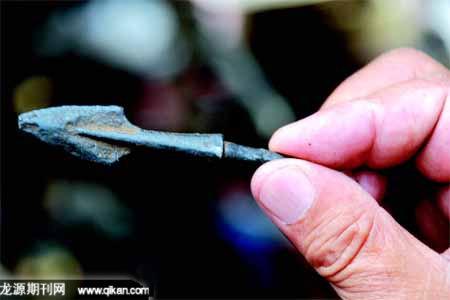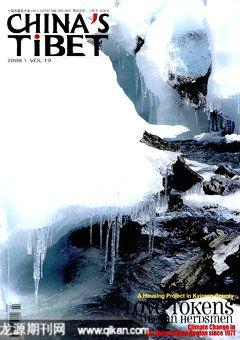Tibetan Traditional Strategies on Thunder and Lighting Prevention
Wang Yuanhong

The Frequent occurrence of thunder and lighting in Tibet inconveniences Tibetan people, even endangering their lives. However, Tibetans have accumulated rich experience to prevent injury from thunder and lighting.
In line with the appointment of Samten, the director of Thunder and Lighting Prevention Office of the Tibetan Autonomous Region, it was revealed that Tibet had a four to five times higher frequency of thunder and lighting than any other area due to its special geographic location. In 2005, the Tibetan Bureau of Meteorology cooperated with the Chinese Academy of Sciences and also one university from Japan to conduct a study on thunder and lighting. In accordance with the data collected, Tibet has the most extensive area of thunder and lighting in China. For instance, in Lhasa about 90 days are acknowledged as typically thunder and lighting days. In addition, the thunder and lighting in Tibet usually occurs in the clouds, but not on the earth. However, the high attitude of
Tibet places Tibetans at the middle part of the atmosphere. Therefore in Tibet Thunder and lighting cannot be neglected.
Tibetans understanding of thunder and lighting was recorded in Bon religions sutra. For example, it was written that thunder and lighting was produced by the combination of a negative electric charge in the lower cloud and a positive one on the ground. Such a theory is actually consistent with modern theory. It says, thunder and lighting in the cloud is the father and the one on the ground is the mother, reflecting the understanding on thunder and lighting of Tibet in its early history. Over 79 monasteries out of 97 monasteries of Bon religion are situated on grassland and the Kham region. Differing from Tibetan Buddhist Religion, the key function of Bon religion is that its doctrines and theories are closely related with the peoples work and lives. As a matter of fact, on holding and disseminating knowledge about thunder and lighting by Bon Religion believers gave the people awareness of how to prevent damage from thunder and lighting.
How have Tibetans worked towards the prevention of thunder and lighting? According to Samten, the phenomena of thunder and lighting occur frequently at the Tibetan plateau at or beyond 4000 meters above sea level. Locals usually adopt different approaches based on the local situation to prevent damage from this natural phenomenon.
The most common way of prevention is to isolate objects. A Tibetan proverb says thog (thunders) and Thog Kha (the roof of building), meaning that people use the roof to prevent damage from thunder and lighting. Usually, people living in farmlands at lower altitudes (less than 4000 meters above sea level) adopted this method. The wall of the building is often thick enough to prevent lightning damage.
Samten says that the method of transferring lighting is a popular method in the grassland, by which people use various kinds of metal materials, such as copper, to divert lighting to the earth. The following preventive approaches demonstrate how people protectthemselves from this natural force.

Shooting an Arrow
In recent archeological discoveries, copper arrows were found amongst the relics of Kongpo. The longest arrow is about five centimeters. According to archeologists, such copper arrows were made over 4000 years ago. If the assumption is correct, it would that mean Tibetans already had an awareness of lighting prevention. Although this conclusion still needs further verification, the fact is that Tibetans do use copper arrows to protect themselves from lighting. Virtually, it is rather common way amongst Tibetans. For example, while herdsmen are grazing flocks, they might encounter lighting and have no chance to escape. What they do is to shoot copper arrows toward the sky away from the flocks in order to transfer thunder and lighting to the earth. Still, such method for the prevention lighting damage in our modern society is rather simple and easy.
Throwing Needles Away
In animal husbandry areas, where the elevation is under the 4000 meters, Tibetans always take needles with them when they go outside. Usually, the needle is metal. Before they project the needle they usually rub the needle in their hair, and then while they are calling “Thunder and lighting will shoot the clown”, they throw it away. Sometimes, after several herdsmen plunge their needles into a high land, they move their flocks down to lower area to avoid the lighting strikes.
Flag Pole
It is quite normal to see two flag poles installed in front of monasteries. They were originally designed to preventing lighting strikes, but later for religion rituals. In front of Tibetan tents, a flagpole is often seen wrapped with iron sheet on its sharp point. The pole is tall. Therefore, lighting would not easily harm surrounding people and flocks.
Lightning Arrester (Togcha)
On the Barkor Street in Lhasa, Tibetans often sell an accouterment named Togcha (actually made of iron). The price is usually higher than gold. Few tourists really know what it is used for. Tibetans prefer to take this accouterment with them to prevent lighting strikes. It is quite a common tool, particularly popular in nomadic areas like Kham. Because this device is also bestowed with the blessings of Bon religion, it is highly valued in terms of being worth higher than the price of gold. Lightning strikes are more frequently in Tibet than in the hinterland. Because such lightning has a small electrical current,people can take metal as conductor to easily prevent injury.
Hunting Rifle
In the old days, Tibetans liked to take a hunting rifle with them when they went out. The rifle has two antelope horns as ornaments and a tool to protect them from lighting, which is close to the rifle barrel and decorated. The sharp point of the horns is wrapped with good quality silver and copper.
Bells
While walking in the grasslands, it is easy to see that yaks are always tied with copper bells or iron rings around the necks. These are intended to prevent the animal from harm from thunder and lighting. It is hard to know how effective they are, but the author believes that it has some effect, at least according to the experience accumulated by people throughout a long history.

Paddling in Water
In agricultural areas in Tibet, people are used to paddling in water to avoid injury from lighting. This method is actually effective against the lightning formed by cloud. According to experts, when the humidity of the atmosphere reaches 70 percent, static electricity will disappear. Therefore, to paddle into water will surely increase humidity and result in the increase of the electric capacity of the earth so that people could escape injury from lighting.
There are various methods in Tibet for protection against thunder and lighting, and Tibetan experts are studying them in order to find out more approaches. These will be the basis of more modern methods for prevention from lighting damage.
In accordance with Samten, the traditional approach for thunder and lighting prevention might contribute to the safety of the lives and property of people in the progress of social and economic development in Tibet. In particular, the utilization of telephone, television, and other electric apparatus challenges the experts on how to applytraditional knowledge to protect the lives and property of people in Tibet. It is definitely necessary to integrate the most effective traditional and modern technologies of damage prevention from lighting to safeguard and bring benefits to all Tibetans.

